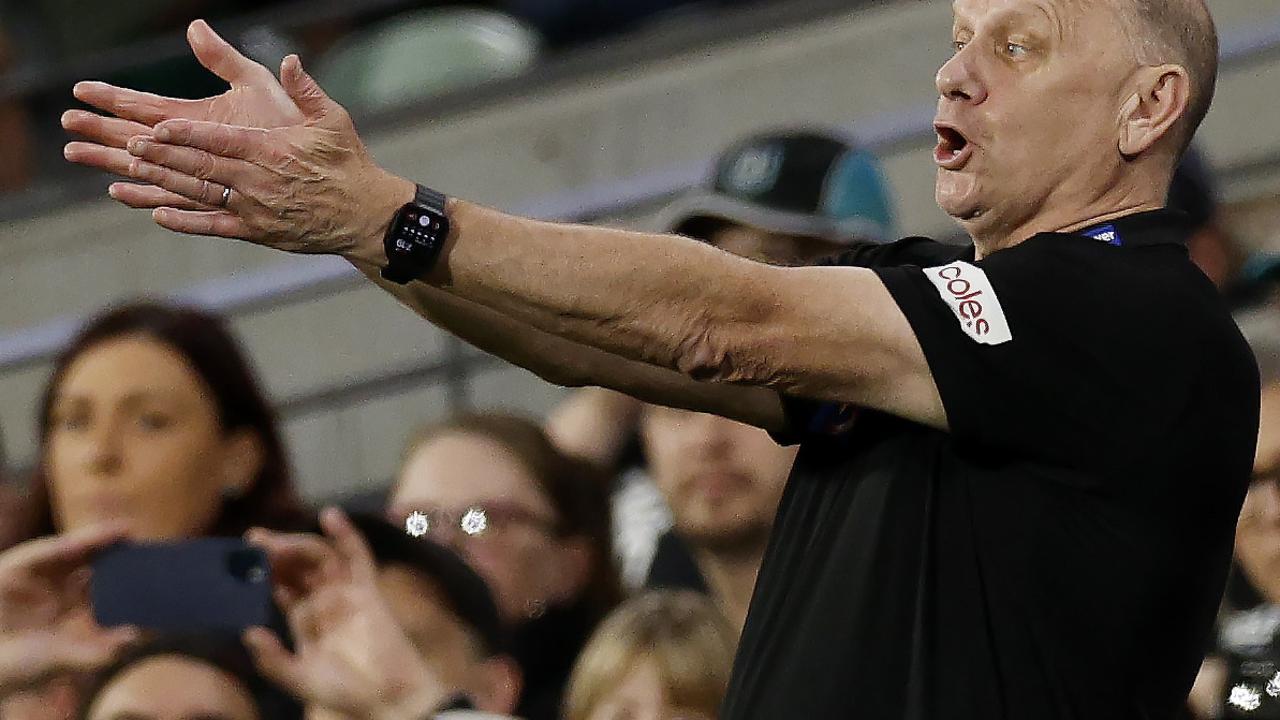AFL 2023: Campbell Brown on GWS, Gold Coast issues Tasmania can’t repeat, Nathan Buckley
Campbell Brown saw first-hand what happens when a new club isn’t set up the right way. What can Tasmania learn from the Gold Coast? It starts with three key appointments.

AFL
Don't miss out on the headlines from AFL. Followed categories will be added to My News.
One of Gold Coast’s inaugural AFL players Campbell Brown says Nathan Buckley would be an ideal candidate to become Tasmania’s first coach as he warned the new 19th franchise to prioritise experience, development and continuity as the three key pillars going forward.
Brown was a premiership Hawk when he joined the Suns as a 27-year-old for the club’s first year in 2011, and he saw first-hand the pitfalls of those first three seasons.
The 205-game player, who was a key member of the Hawks 2008 flag side, said an experienced coach and chief executive were essential in creating a new side from scratch.
While there is still plenty of time before Tasmania’s first coach will be named — given the team won’t come in until at least 2028 — Brown says former Magpies coach Buckley should be among those under consideration into the future.

Buckley has maintained he has no intention of coaching in the short to medium term, but Brown wonders if the fact the Tassie team doesn’t need a coach until 2028 might coax him back to a senior role.
“ (2028) is a fair while away … A guy like Nathan Buckley, who is loving his time in the media, says he doesn’t want to coach for the next few years,” Brown said of the man who took Collingwood to a heartbreaking grand final loss in 2018, as well as five finals series.
“But they should ask the question (of him).
“By all reports, he understands some of the mistakes he made early in his coaching career. “The good thing is he wouldn’t need to do it for the next few years. He would be perfect.”
Brown said Brendon Gale — a native Tasmanian — could be headhunted to run the new club, though the AFL is looking at him for an expanded football operations role.
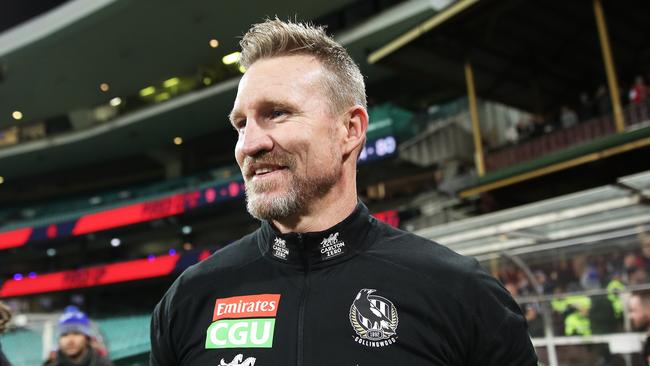
Outgoing AFL chief executive Gill McLachlan acknowledged on Wednesday the league had learnt many lessons from setting up Gold Coast and Greater Western Sydney a decade ago.
Brown said those lessons must centre on locking in people who had already had experience in their chosen roles, something which didn’t happen at the Suns.
“The first point should be to make sure there are people in positions who have done the roles before, so that they aren’t learning as they go,” he said.
“There wasn’t a modern blueprint but on reflection the Suns and the Giants went about it differently from the start.
“They (Gold Coast) went with a first-time president, John Witheriff, who was a great person but who didn’t necessarily have a footy base. They went with Travis Auld, who was terrific, but it was his first time (as CEO). They went with Marcus Ashcroft, a first-time footy manager. They went with ‘Bluey’ (Guy) McKenna, who was a first-time senior coach. And they went with Gary Ablett, a first time captain who hadn’t been in the Geelong leadership group.
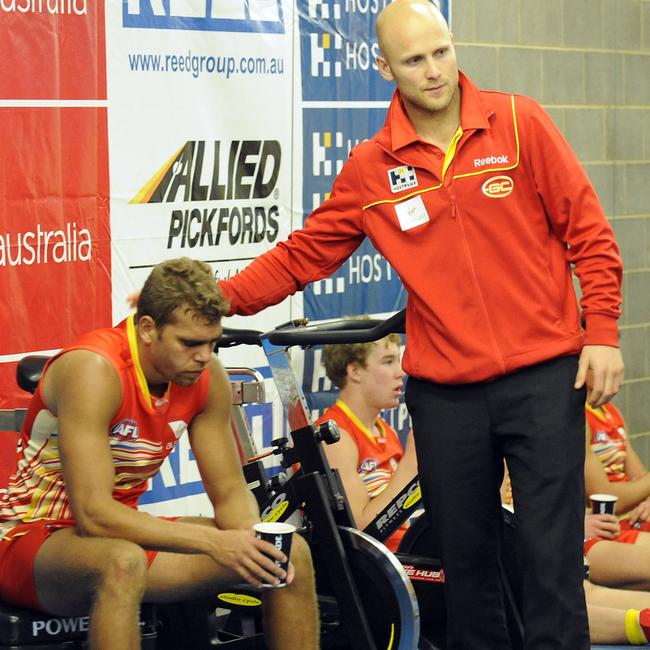
“From the top all the way down, it probably just lacked a bit of experience for the roles they were filling.
“The Giants went the other way. They got ‘Gubby’ Allan, who knows every trick in the book, they got Dave Matthews (as CEO). Sheeds (Kevin Sheedy) was the coach but they also had Mark Williams, who was a premiership coach in his own right. And with the players they got James McDonald, who had been a club captain, as well as Dean Brogan, Luke Power and Chad Cornes to help the young guys.
“Then they recruited Phil Davis and Callan Ward, who went on to captain the club.”
Brown said development of the playing group had to be paramount.
“If you don’t have the appropriate development program to support them, it doesn’t matter how many first-round draft picks you have got,” he said.
“I would say our (Gold Coast’s) development program was almost non-existent. We were just playing them and getting games on them, but it wasn’t helping them.”
Brown also implored those in charge of the new club to ensure there is some continuity to the football program that is developed, something that didn’t happen at the Suns where they had three fitness heads of fitness in their first three seasons.
“Young bodies need continuity with their training and programs,” he said. “We had a lot of chopping and changing and that’s not good.”
CRICKET CHIEF REVEALS KEY TO SPORTING SUCCESS IN TASSIE
Sam Landsberger
Players will prioritise an elite football program and AFL opportunities over the quieter Hobart lifestyle, according to the man who spent three years attracting star cricketers to Tasmania from across Australia and the world.
Nick Cummins, who was the boss of Cricket Tasmania before crossing to Cricket Victoria in 2019, said he was “astounded” by Hawthorn captain James Sicily’s comments that there’s “not much happening down there” in Tasmania and he wouldn’t contemplate moving.
Cummins said Sheffield Shield stars Jordan Silk and Jackson Bird had overtures to return home to New South Wales – but had chosen to stay at the Tasmanian Tigers because they were in the XI and flourishing under that regime.
He said only the sport’s megastars, like Twenty20 gun-for-hire Kevin Pietersen, flatly refused to consider Big Bash clubs including Hobart Hurricanes because they wanted to play in Melbourne or Sydney.

“From a (Tasmania) Tigers perspective they generally tend to look at program and opportunity, and you probably see this with Geelong. Is their program good – do you have good coaches, do you have a good set up, is it well run? And No. 2am I going to get an opportunity?” Cummins said.
“They’re the two things most players will look at to make a decision, rather than what‘s the cafe culture like?
“If you use the Swans and Geelong as examples, and maybe the Eagles previously, they were able to build great programs that meant that Victorian players were happy to stay indefinitely.
“I think it will be hard to recruit a certain type of player, if we're talking about mature-age rather than through the draft – so if it’s Buddy Franklin in inverted commas – for someone like him, it’s going to have to be if you offer me enough money I’ll come.
“For mid-range players it’s going to be am I going to get an opportunity that I’m not getting here? So I don't think it’ll be much of a contentious issue.”

Cummins, who also worked for former player manager Craig Kelly’s talent company from 1997-2004, said the go-home factor was at its strongest for players aged 18-22.
But he said that could be mitigated by targeting Vic Country players, a draft strategy that has worked wonders for Brisbane Lions since five youngsters walked out in 2013.
“They were the ones that feel like they're missing out because all their mates from school are back home and they’ve got 21st birthdays, they have a great night out and they hear about it and feel like they’re missing out,” Cummins said.
“They're often the ones that had challenges, particularly if they’re from metro Melbourne. The guys from the country aren’t as concerned because if you’re from Mildura or Albury you grew up always knowing you had to leave home.
“So whether it‘s Melbourne or Hobart, it doesn’t particularly matter. On the other end if you’ve got someone who’s towards the end of their career whose got young children, Hobart is actually quite a good place to be.
“One of the strengths of Tasmania is that if your coach wants to call a meeting, everyone lives about 20 minutes from the club. So you can get everyone together, they can train and they can be home within 20 minutes. You just can't do that for the Melbourne clubs.
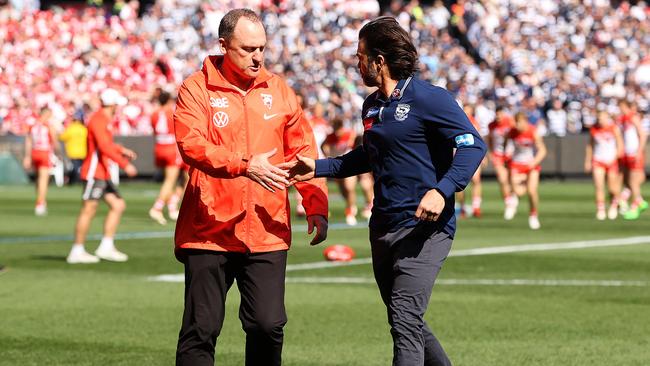
“The Swans program is set up the right way and they don’t lose many players, so if I’m CEO of the Tassie Devils, or whatever they’ll be called, that’s what I’m focusing on.
“We want to be a club of choice, we want to create an amazing program so that the players there feels supported, they feel like they're getting better and it’s a professional environment – that’s the sell.
“Geelong and the Swans are the best example of off-Broadway teams that have actually made it a point of difference and they're now clubs of choice.
“People want to go to Geelong, people want to go to the Swans and where they live is a secondary, but other clubs where they don't have a strong program all of those other peripheral things do all of a sudden become an issue.
“I've seen a lot of commentary on social media and I just don’t agree with it. We didn’t have issues where players say, ‘look, I just don’t want to move to Tassie’ aside from big stars.”
NICK CUMMINS ON …
HOBART’S HOUSING MARKET
“One of the bigger issues which has not come up is the impact on the housing market. It's not a big housing market and if you drop 100 people, including staff, on an average of $150,000-$200,000 it’ll be like Karratha or one of the mining towns. Having a disproportionate number of people earning high income then distorts the market. There aren’t enough hotels in Hobart and so AirBnB is huge. If you add up all the AirBnB properties in Darwin, Adelaide and Canberra, they equal Hobart, so there’s already a housing shortage because of AirBnB. Putting that many people in at once into a town the size of Geelong will have a significant impact. Go onto realestate.com.au and see how many houses are for sale in South Hobart or the Sandy Bay area … there’s hardly any.”
PM ANTHONY ALBANESE’S HINT THE NEW STADIUM WON’T HAVE A ROOF
“I think that’s a good thing because I think this stadium is going to go way over budget. The biggest issue with Hobart is not the cold – when the sun is out it‘s actually quite warm, even if it’s 12 degrees. It’s the wind – particularly at Macquarie Point it can be quite cutting. But people describe Hobart like you’re playing in Alaska when it’s not that different to Melbourne.”
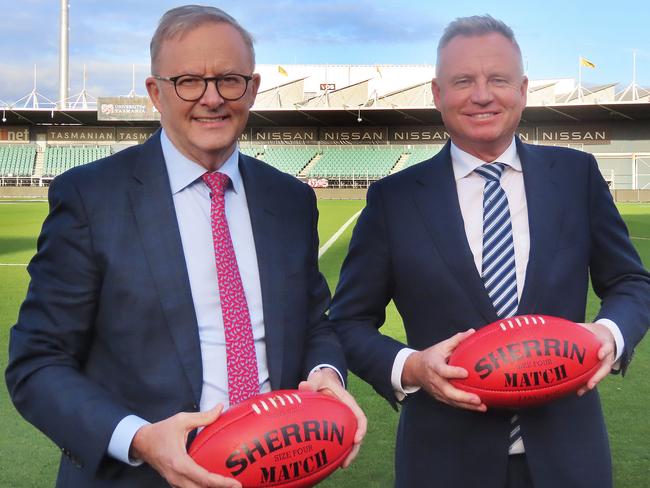
WHY SMALLER IS BETTER
“There are challenges around the market size and the remoteness. Everyone talks about the Green Bay Packers – the Packers are small, but Wisconsin’s got 5.9 million people. So they’ve got to build a stadium the right size. They can't build it too small that they can’t make money, but they can’t make it too big that it’s a bad experience for fans. I’d err on the side of small because you want the feeling of a packed house, not an echo chamber.”
THE CHALLENGE FILLING IT
“All of our stadia, except for Perth, have been built when games were not broadcast live against the gate. So when people say we should build a 35,000-seat stadium, or even 27,000, those sizes are not in line with contemporary viewing habits. If we were building the MCG again, we probably wouldn’t be building it at 100,000 because up until the last 15 years you couldn’t watch the game live against the gate if you lived in Melbourne. Blundstone Arena’s capacity is 16,000-17,000 – it‘s not 20,000, and it’s not close to selling out. You shouldn’t build a stadium for your biggest game, you shouldn’t build a stadium for your average game. There’ll be big crowds early, because it’s new and shiny, but Tasmania versus Gold Coast in June when it’s 14th versus 17th is getting 6000 people. It’s hard to get people to attend games – Hobart’s population is 200,000 and across Tasmania is 500,000. But Burnie is three and a half hours from Hobart and Tasmanians, just like any other fan, will select the games they want to go to, as they do in cricket.
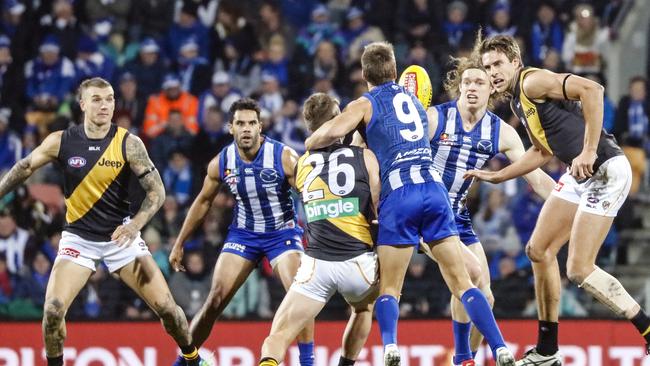
ATTRACTING CONTENT
“You have to pay for content, whether that's Melbourne Victory or Melbourne Storm or Ed Sheeran. There isn’t a lot of content around, so you’re in a bidding war against other second tier (venues) such as Manuka Oval (Canberra), Great Barrier Arena in Mackay or other similar-sized venues in that market.”
ATTRACTING VICTORIANS
“If 5000 Collingwood fans want to go to Hobart then the airfares will be $800. Although it’s close, there aren’t that many flights and so they’ll need to charter extra flights – but then you’ve got to have the accommodation capacity to host those people. There’ll be some challenges.”
HOW TO TURN A PROFIT
“I would say 20,000 is the right stadium size – but then you say what about Collingwood? The answer is a robust membership program, so you’d better be a home 11-game member. Then they have 20,000 members and a sell-your-seat program. So if you can’t go to the Collingwood game, you can sell your seat to someone else, which means as a club you effectively get to sell your membership twice. In order to be profitable you need to have scarcity. You don’t want people to say, ‘I’m just going to see how they go this year’. You need to say, ‘If you don't renew your membership, you’ll lose it and someone else will get it because we’ve got a waiting list like the MCC’. So if you’re going to renew you might be buying a membership only for the Collingwood game and then you can sell the rest of those games through a resale program, which a lot of English Premier League clubs have. The trend around global sport is building around scarcity. The new 49ers (NFL) Levi’s Stadium is 68,000 capacity and the San Francisco Bay area is about 7.7 million people. The reason was they wanted it to be full – because it’s broadcast live against the gate – and they want scarcity. We’ve got to go against this culture in Australia where people believe they have a right to a seat in a stadium if they feel like going, and when they don’t go they look on TV and say, ‘Look how bad the crowd is’.”




